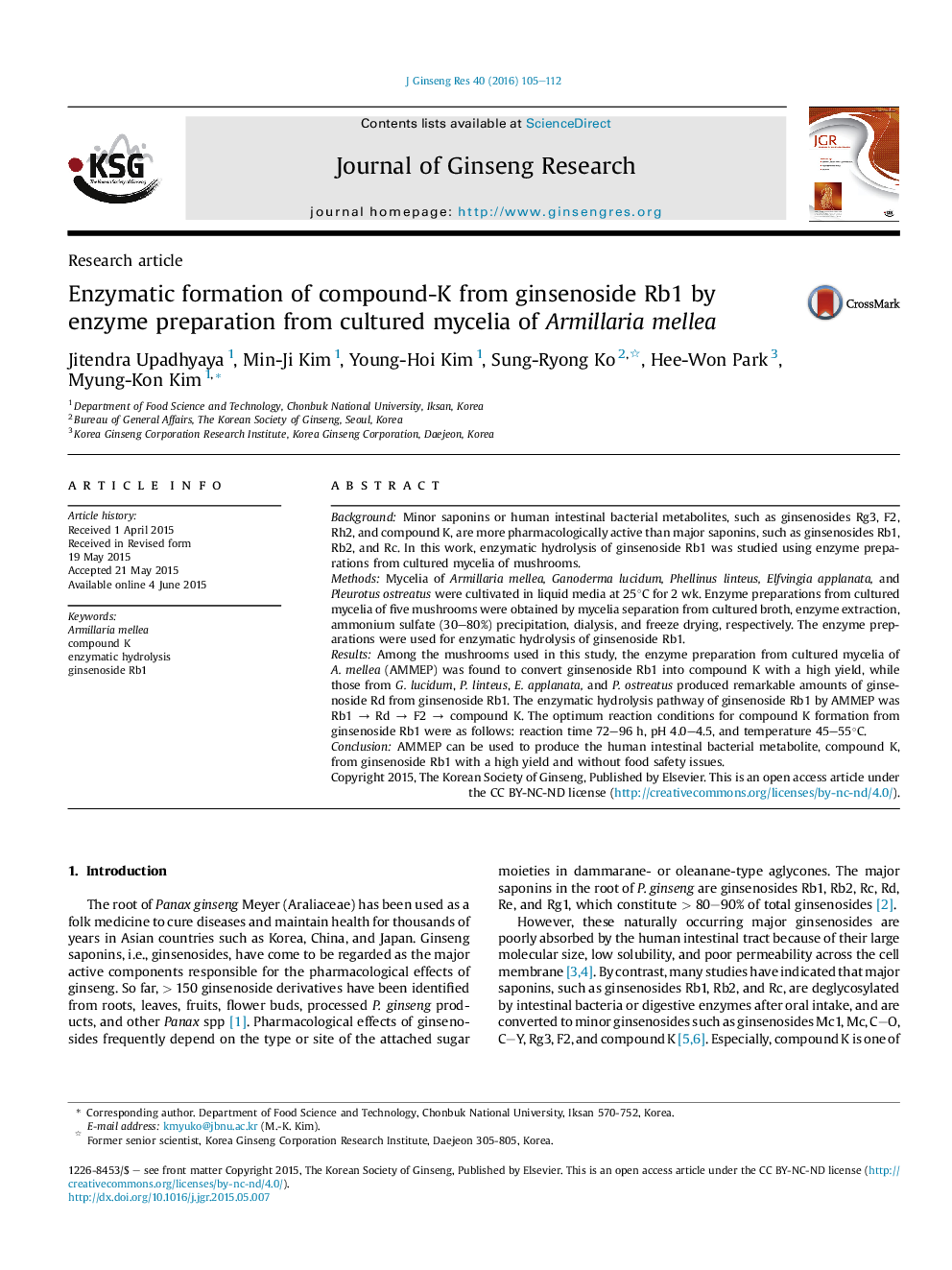| Article ID | Journal | Published Year | Pages | File Type |
|---|---|---|---|---|
| 3099261 | Journal of Ginseng Research | 2016 | 8 Pages |
BackgroundMinor saponins or human intestinal bacterial metabolites, such as ginsenosides Rg3, F2, Rh2, and compound K, are more pharmacologically active than major saponins, such as ginsenosides Rb1, Rb2, and Rc. In this work, enzymatic hydrolysis of ginsenoside Rb1 was studied using enzyme preparations from cultured mycelia of mushrooms.MethodsMycelia of Armillaria mellea, Ganoderma lucidum, Phellinus linteus, Elfvingia applanata, and Pleurotus ostreatus were cultivated in liquid media at 25°C for 2 wk. Enzyme preparations from cultured mycelia of five mushrooms were obtained by mycelia separation from cultured broth, enzyme extraction, ammonium sulfate (30–80%) precipitation, dialysis, and freeze drying, respectively. The enzyme preparations were used for enzymatic hydrolysis of ginsenoside Rb1.ResultsAmong the mushrooms used in this study, the enzyme preparation from cultured mycelia of A. mellea (AMMEP) was found to convert ginsenoside Rb1 into compound K with a high yield, while those from G. lucidum, P. linteus, E. applanata, and P. ostreatus produced remarkable amounts of ginsenoside Rd from ginsenoside Rb1. The enzymatic hydrolysis pathway of ginsenoside Rb1 by AMMEP was Rb1 → Rd → F2 → compound K. The optimum reaction conditions for compound K formation from ginsenoside Rb1 were as follows: reaction time 72–96 h, pH 4.0–4.5, and temperature 45–55°C.ConclusionAMMEP can be used to produce the human intestinal bacterial metabolite, compound K, from ginsenoside Rb1 with a high yield and without food safety issues.
